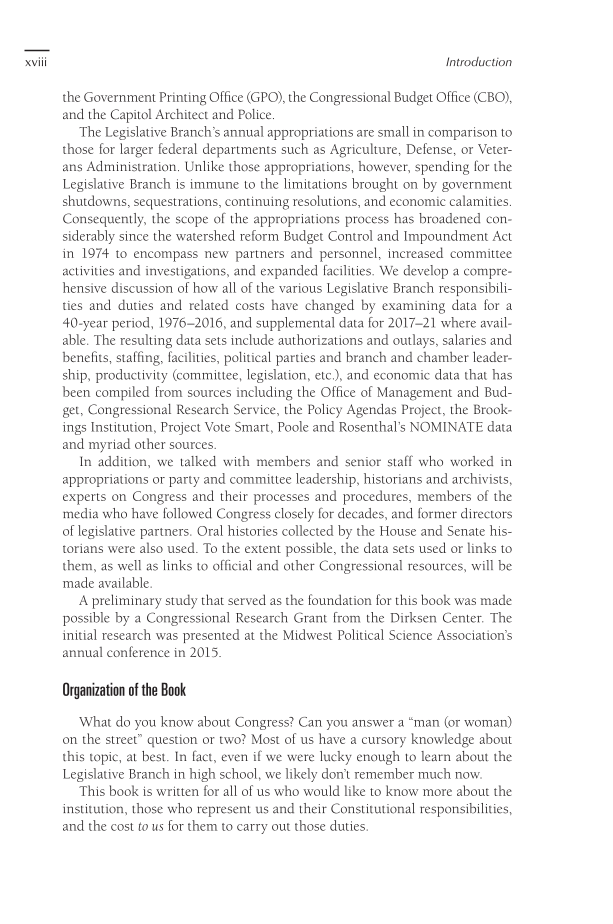xviii Introduction the Government Printing Office (GPO), the Congressional Budget Office (CBO), and the Capitol Architect and Police. The Legislative Branch’s annual appropriations are small in comparison to those for larger federal departments such as Agriculture, Defense, or Veter- ans Administration. Unlike those appropriations, however, spending for the Legislative Branch is immune to the limitations brought on by government shutdowns, sequestrations, continuing resolutions, and economic calamities. Consequently, the scope of the appropriations process has broadened con- siderably since the watershed reform Budget Control and Impoundment Act in 1974 to encompass new partners and personnel, increased committee activities and investigations, and expanded facilities. We develop a compre- hensive discussion of how all of the various Legislative Branch responsibili- ties and duties and related costs have changed by examining data for a 40-year period, 1976–2016, and supplemental data for 2017–21 where avail- able. The resulting data sets include authorizations and outlays, salaries and benefits, staffing, facilities, political parties and branch and chamber leader- ship, productivity (committee, legislation, etc.), and economic data that has been compiled from sources including the Office of Management and Bud- get, Congressional Research Service, the Policy Agendas Project, the Brook- ings Institution, Project Vote Smart, Poole and Rosenthal’s NOMINATE data and myriad other sources. In addition, we talked with members and senior staff who worked in appropriations or party and committee leadership, historians and archivists, experts on Congress and their processes and procedures, members of the media who have followed Congress closely for decades, and former directors of legislative partners. Oral histories collected by the House and Senate his- torians were also used. To the extent possible, the data sets used or links to them, as well as links to official and other Congressional resources, will be made available. A preliminary study that served as the foundation for this book was made possible by a Congressional Research Grant from the Dirksen Center. The initial research was presented at the Midwest Political Science Association’s annual conference in 2015. Organization of the Book What do you know about Congress? Can you answer a “man (or woman) on the street” question or two? Most of us have a cursory knowledge about this topic, at best. In fact, even if we were lucky enough to learn about the Legislative Branch in high school, we likely don’t remember much now. This book is written for all of us who would like to know more about the institution, those who represent us and their Constitutional responsibilities, and the cost to us for them to carry out those duties.
Document Details My Account Print multiple pages
Print
You have printed 0 times in the last 24 hours.
Your print count will reset on at .
You may print 0 more time(s) before then.
You may print a maximum of 0 pages at a time.

























































































































































































































































































































































































